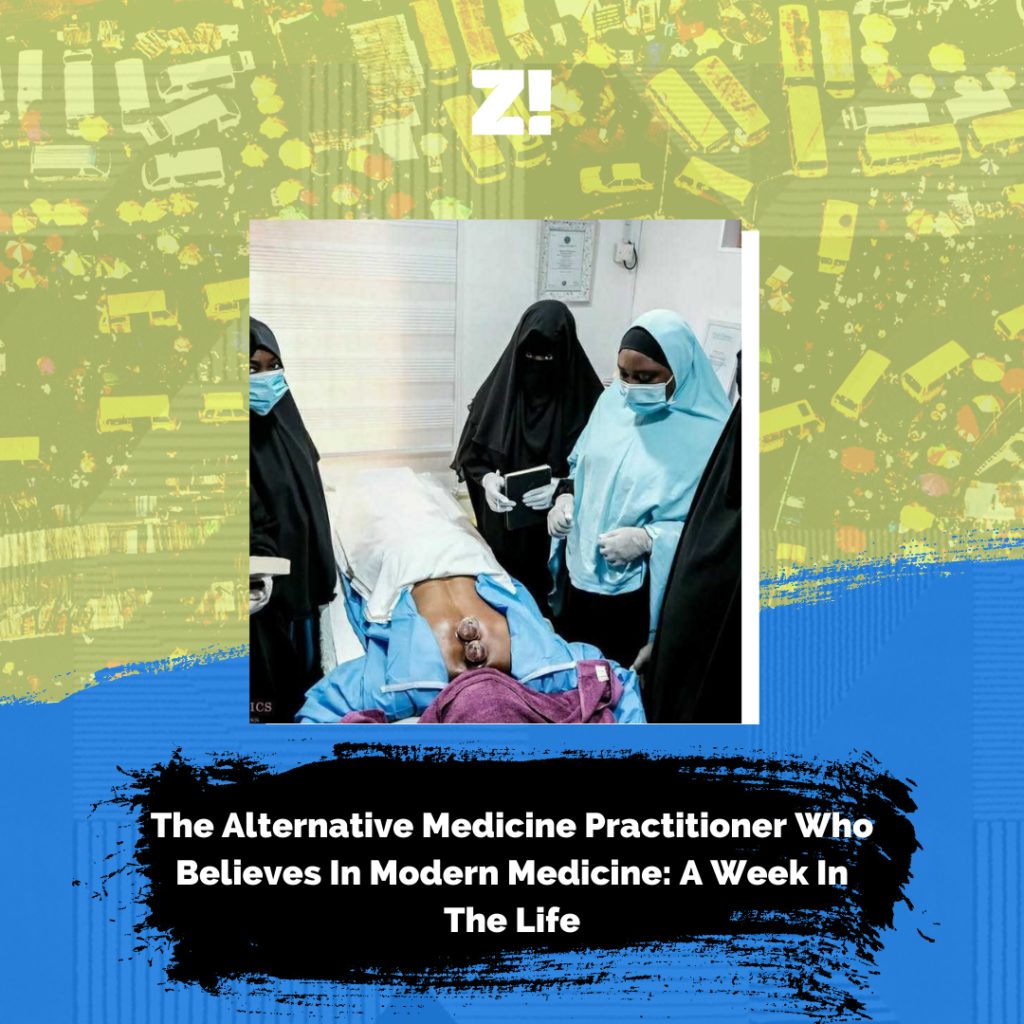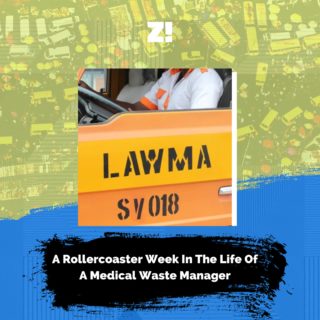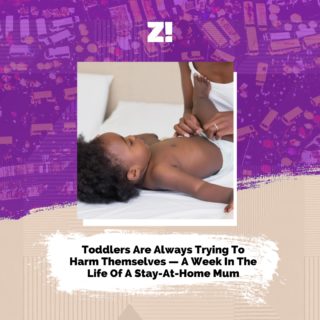A Week In The Life” is a weekly Zikoko series that explores the working-class struggles of Nigerians. It captures the very spirit of what it means to hustle in Nigeria and puts you in the shoes of the subject for a week.
The subject of today’s “A Week In The Life” is a cupping therapist. Cupping is a form of alternative medicine practice that involves making painless cuts on the skin to remove toxins. Our subject talks about the health benefits of cupping, why she enjoys her job and how she combines alternative and modern medicine.

MONDAY:
I’ve been awake for about 30 minutes now, trying to prepare for Tahajjud. My day starts at 4:30 a.m. every day, and I pray from dawn till the first traces of morning light.
Once I’m up, I rarely go back to sleep unless I’m really tired. But today is trying to prove me wrong. It takes all my energy to remain awake.
My days are relatively flexible. Sometimes, work starts as early as 8 a.m., other times, it starts by 3 p.m. My schedule depends on whether I have classes for the day or not. As a master’s student at Unilag, I try to balance work and school so I don’t lose out on any. If I have classes in the morning, I’ll work in the evening, and if classes are in the evening, I work in the morning.
It’s not a perfect system but I try.
I love my job, okay? I don’t make all the money in the world but it gives me a lot of satisfaction because I get to help people.
I’m a cupping therapist who treats people using cupping therapy. Cupping is an ancient form of alternative medicine where therapists put special cups on the skin to create suction. The suction lifts the skin tissues and improves blood flow to other parts of the body. In places where the body tissue is stressed or constricted, it provides relief and keeps the body relaxed. I guess you could say it’s like a deep tissue massage, but more magical.
Cupping is a treatment that constantly amazes even the practitioners. However, we all agree that it’s a simple procedure with great results.
A perfect example of great results: I’ve had patients with severe back pain come in, schedule a consultation, receive treatment and get better. The next day, I’ll wake up to long epistles thanking me for solving their problem and giving them peace.
A typical session lasts between 30-40 mins and involves a lot of standing, disinfecting and massaging — all of which are stressful. However, seeing people get better makes it worth it. On most days, I go home aching, tired, but happy.
Today is shaping up to be one of those days. My lectures start in the afternoon, so I have appointments scheduled from 9 a.m. till afternoon.
I’m standing up to pray because it’s 4:40 a.m. and the time for Tahajjud is slowly slipping away. Prayer is important because at the end of the day, no matter what I do, it’s still Allah’s blessings that make everything work.
TUESDAY:
Today was difficult because I’m still recovering from yesterday’s sessions. I had a slow day, and the highlight was explaining the various types of cupping methods to a new client.
There are several methods, but I mostly focus on dry, wet and massage cupping.
Dry cupping involves applying cups to form suctions on certain parts of the body, after which the suctions are released. In massage cupping, the cups are used to massage a person’s body and this goes a long way in helping with blood flow and reducing pain and inflammation in the body.
Wet cupping, also known as Hijama, is my forte. For this, surgical blades are used to create superficial, painless incisions on the skin to remove toxins from the body. After this, special suction cups are placed on the skin and toxic blood is allowed to accumulate where the cups are placed. Body sites for these “cuts” range from behind the neck to the shoulder to the back. These sites work for boosting immunity, treating ulcers, relieving back pain, etc.
As cupping therapists, we have points in the body we don’t touch. We avoid places containing veins, such as the inner arm. We also avoid working on some parts of the face and head.
After explaining all this, I ended my speech by telling my patient that if done well, cupping leaves no marks and is less painful than a pinch.
WEDNESDAY:
The first thing I do when a patient approaches me is a consultation session. This helps with two things: to either recommend the person to a doctor or to understand what might be wrong with them. Sometimes it’s issues they’re not aware of and during these consultations, they bring them up.
For example, a patient complaining of migraines may reveal that they don’t eat or sleep well. So better sleep and diet could be a solution instead of cupping. In other instances, the problems are psychological and all the patient needs is a heart to heart conversation. I always tell my patients that without attending to other factors, cupping will not solve anything.
Today, a patient approached me for cupping saying they had symptoms they thought might be malaria. I told them not to “think” and to consult their doctors first for a diagnosis. After the results, they were then free to choose their preferred treatment approach.
No diagnosis, no cupping.
THURSDAY:
The best part of my job is that I get to meet different people. As someone who is a people person, connecting with my clients gives me joy. The next best part is I get to help women. Women are delicate and go through a lot. We endure a lot of pain and consider it as “part of our lives.” It’s not. I want women to live happier and better lives, and I don’t think this is too much to ask.
As a Muslim woman who can’t touch men, a lot of my practice is women-focused. And because women endure a lot of pain due to hormones, I’m always looking for ways to help them live pain-free lives.
Today, I’m thinking about getting more education to fulfil this dream. My goal is to become a naturopath — I want to learn acupuncture, hydrotherapy, fire therapy and any important therapy women need.
I’ll then use this knowledge to run a clinic where women can get treatment using the natural medicine approach. My goal is to remove barriers like menstrual cramps that prevent women from living their best lives.
Editor’s note: Zikoko doesn’t give medical advice and only seeks to tell diverse stories. You should always consult a physician first.
In addition to being a cupping therapist, the subject of today’s “AWITL” is also a pelvic steaming expert who helps women relieve menstrual cramps. She can be reached here.
Check back every Tuesday by 9 am for more “A Week In The Life ” goodness, and if you would like to be featured or you know anyone who fits the profile, fill this form.




